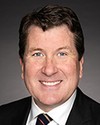Thank you very much for the question.
When we look at the targets for homelessness, one main factor is working with our community entities across the country. We have 60 community entities, plus a number of community entities in Quebec, and we are working with the territories. They are implementing something we call “coordinated access”, which is a transformational change in the way they serve the homeless people in their communities. It is about no wrong door and for them to make a difference. We've seen, for example, in Dufferin, a 50% reduction since they've put coordinated access in place. It is about coming together as a community and aligning programs and services to be able to serve that homeless-serving sector, which wasn't happening before.
When this particular audit began, this program was in the initial creation of the transformation within the homeless-serving sector and communities across the country. Then COVID hit, so that was a drastic change for them to saving lives and protecting people. Now communities are coming back to being able to implement coordinated access.
You'll see in the report that at the time we had only nine communities that had coordinated access. Now we have 43 communities. The last 17 are on track and we're working with them, as well as the Canadian Alliance to End Homelessness, to have them be able to implement coordinated access. We know, as we look at international best practices, that this is a best practice that makes a difference in communities.




